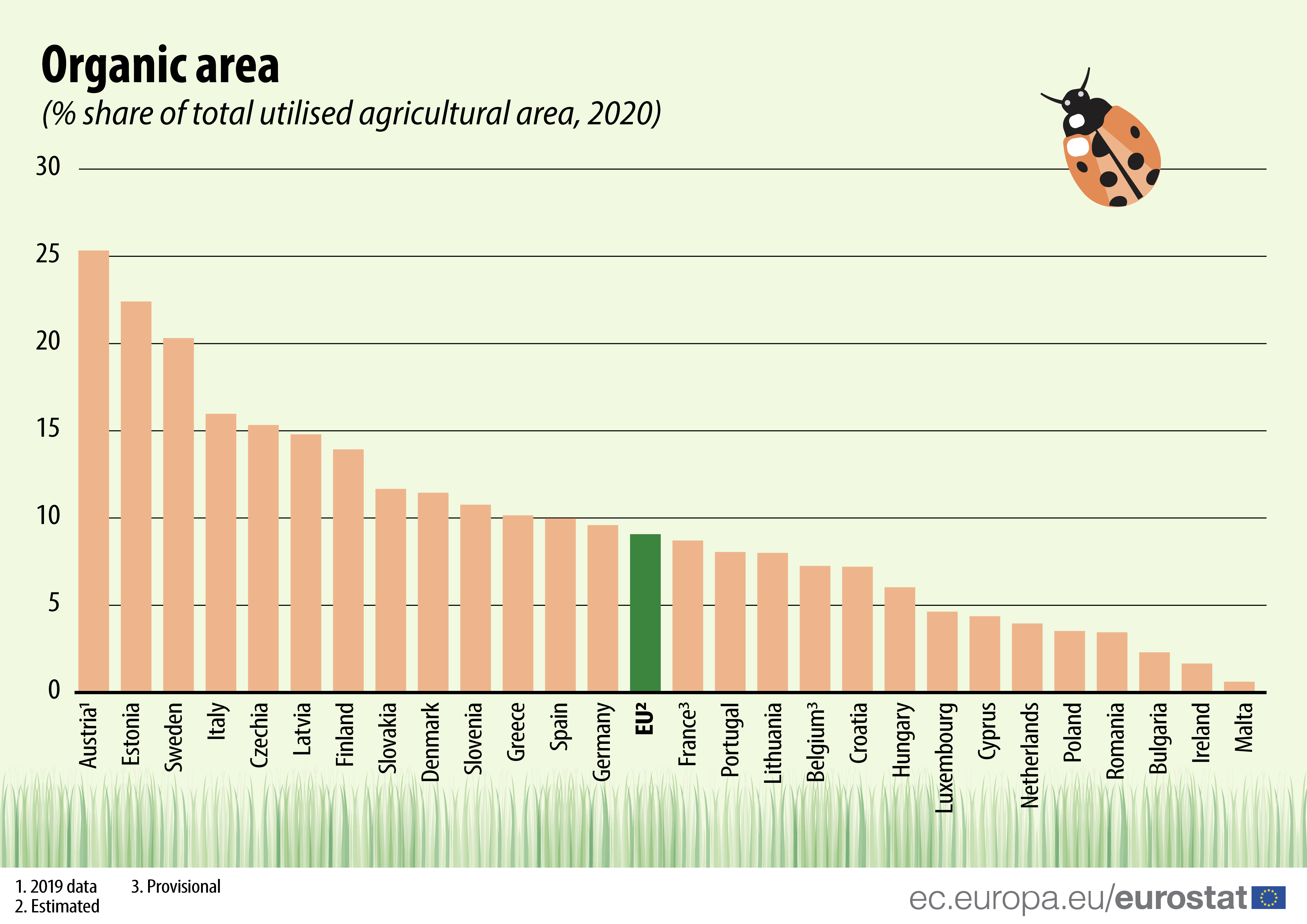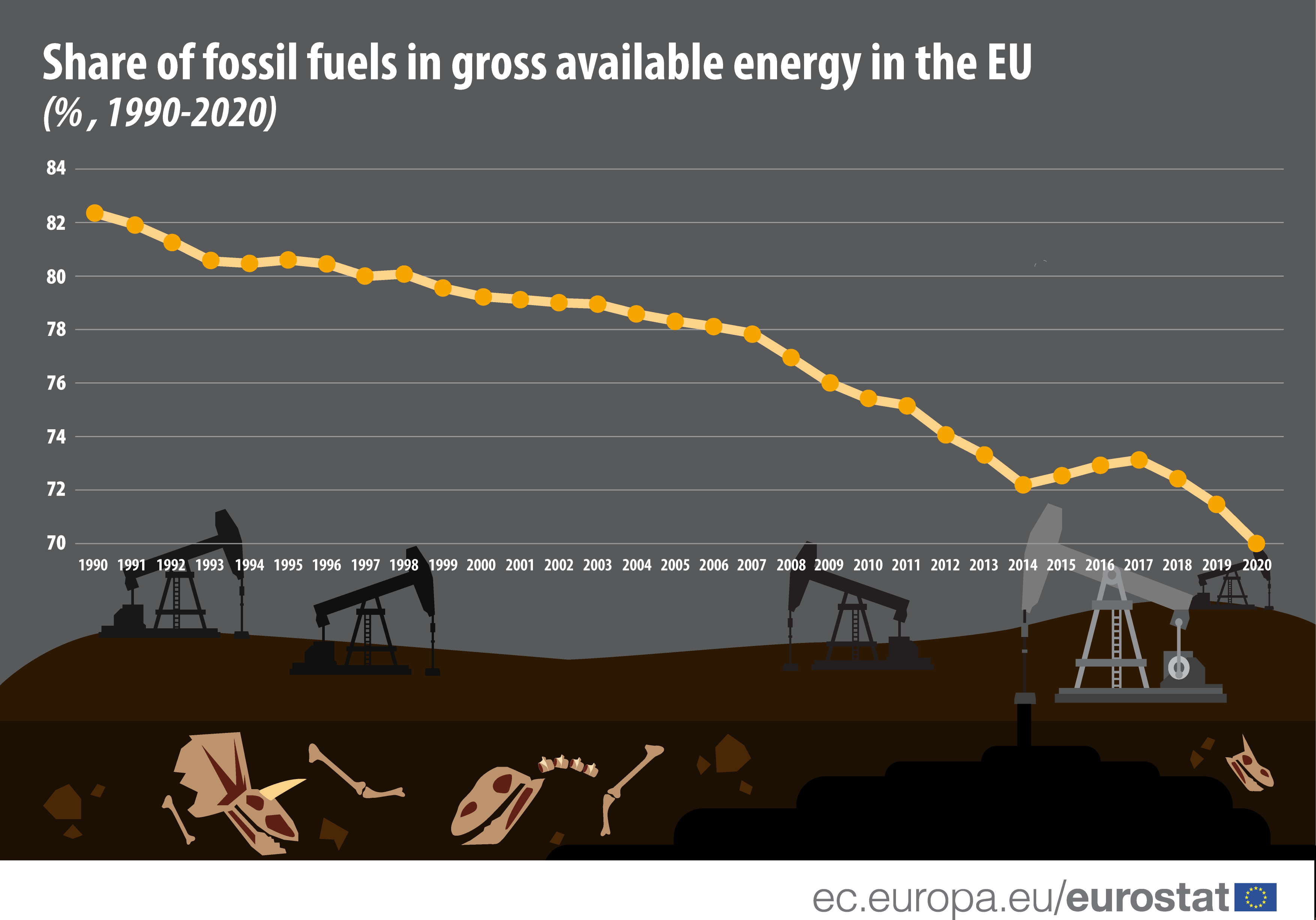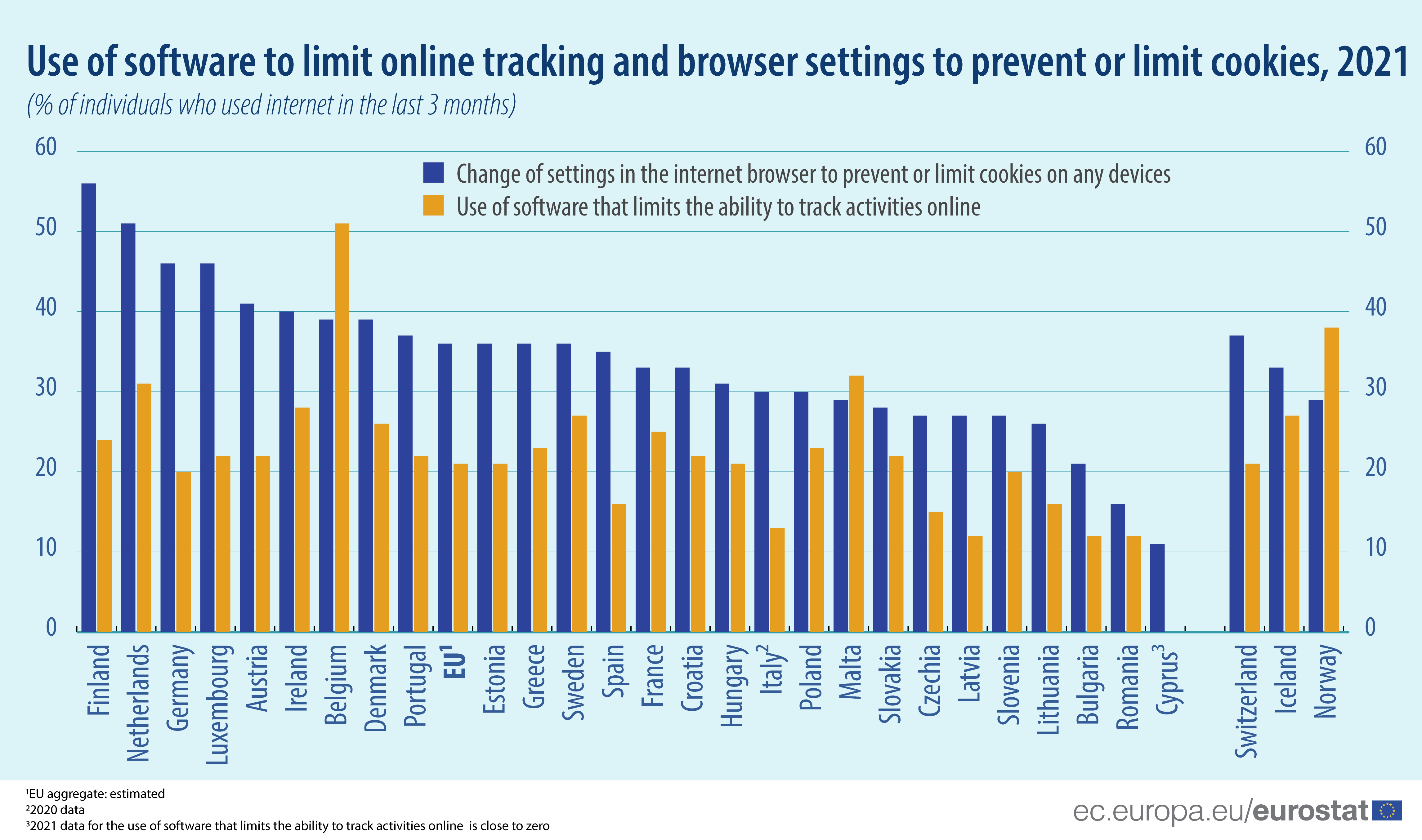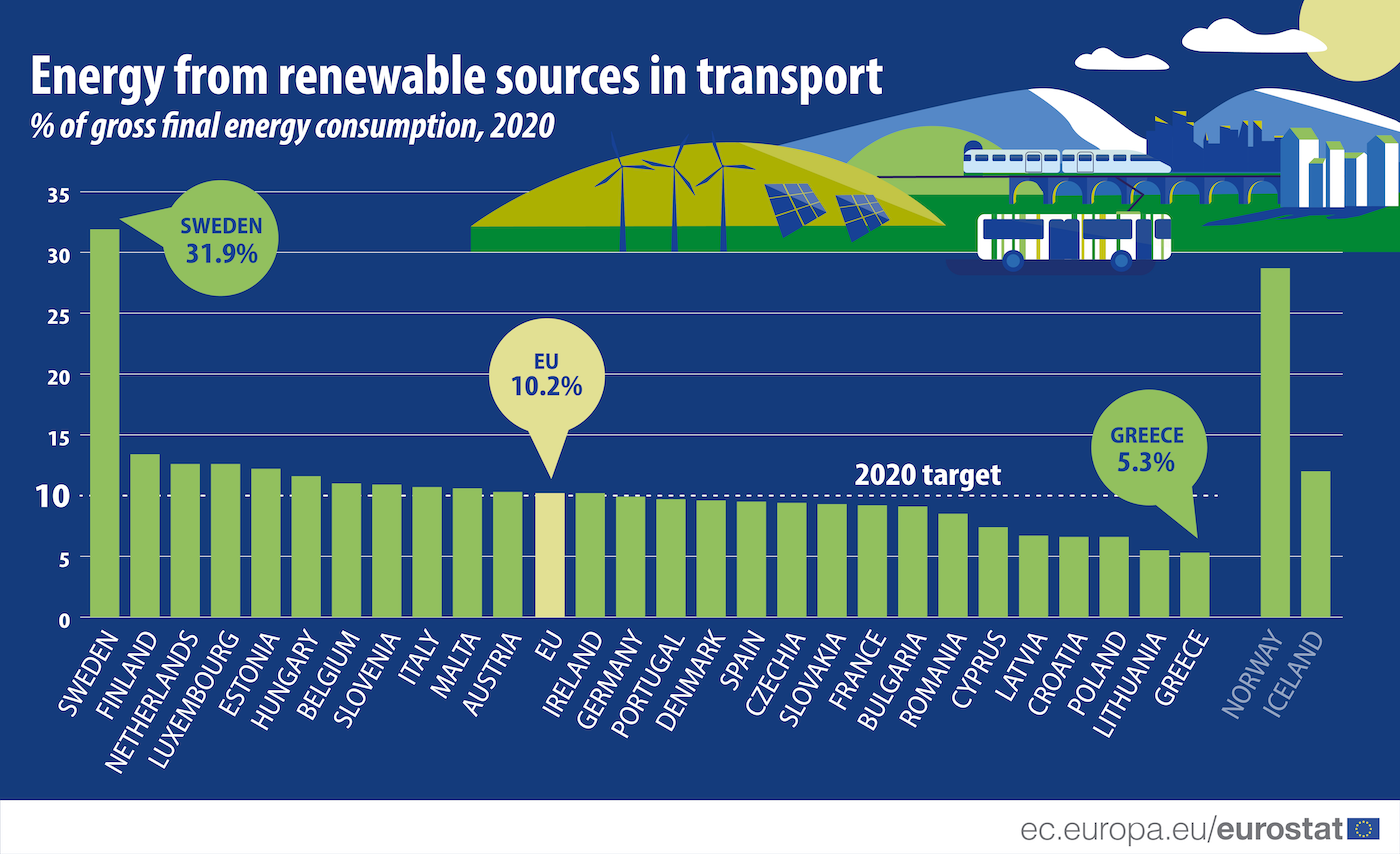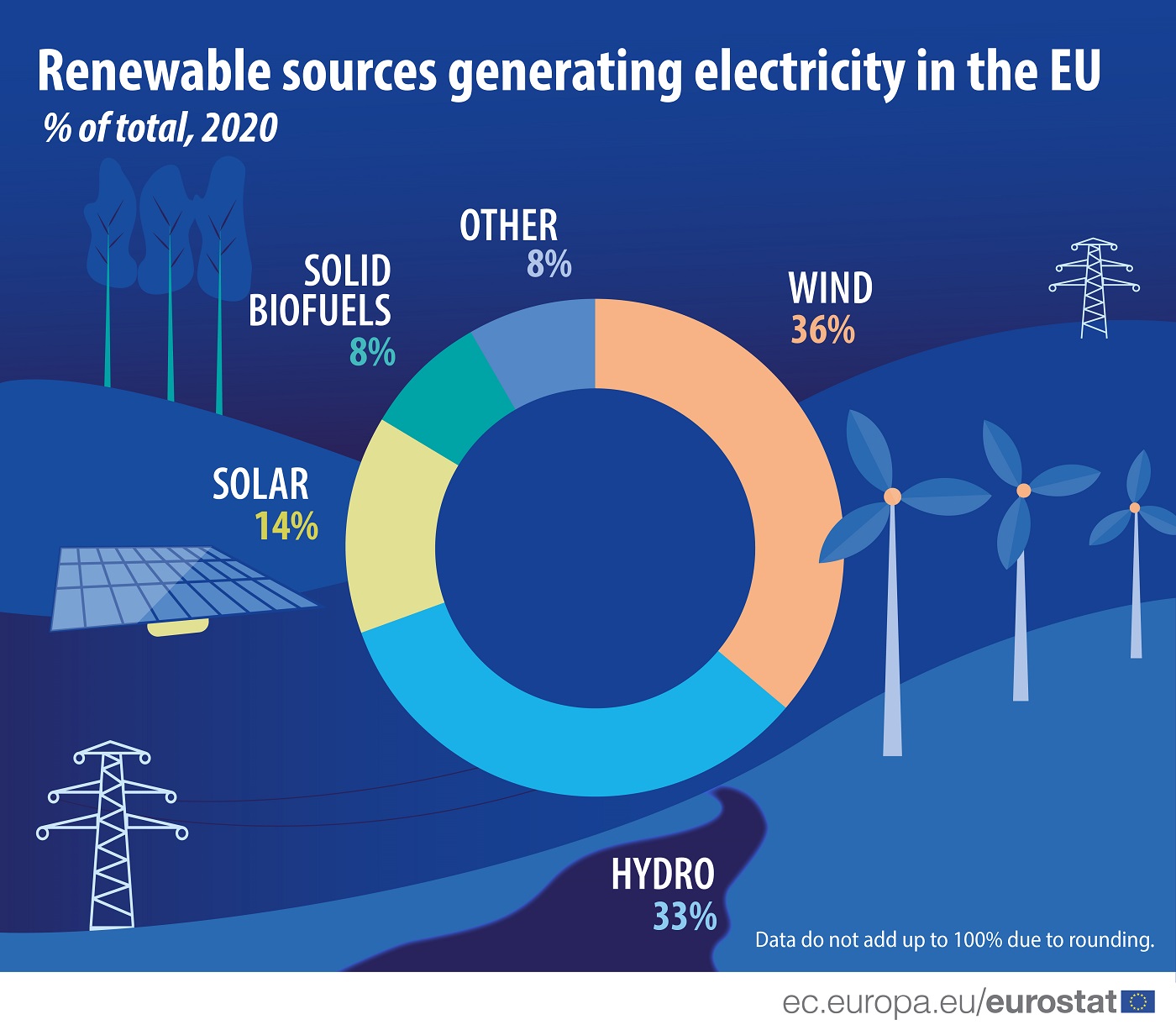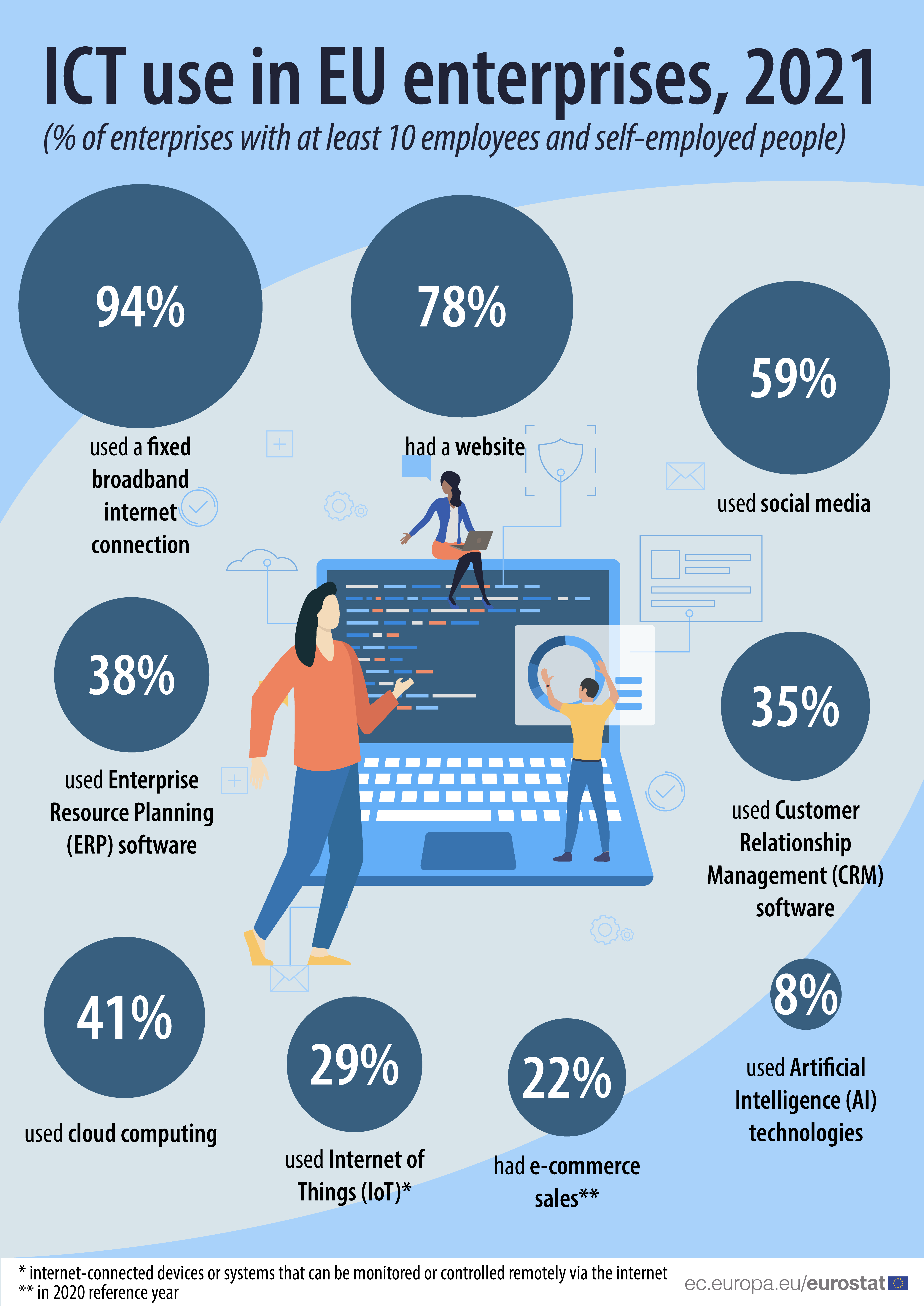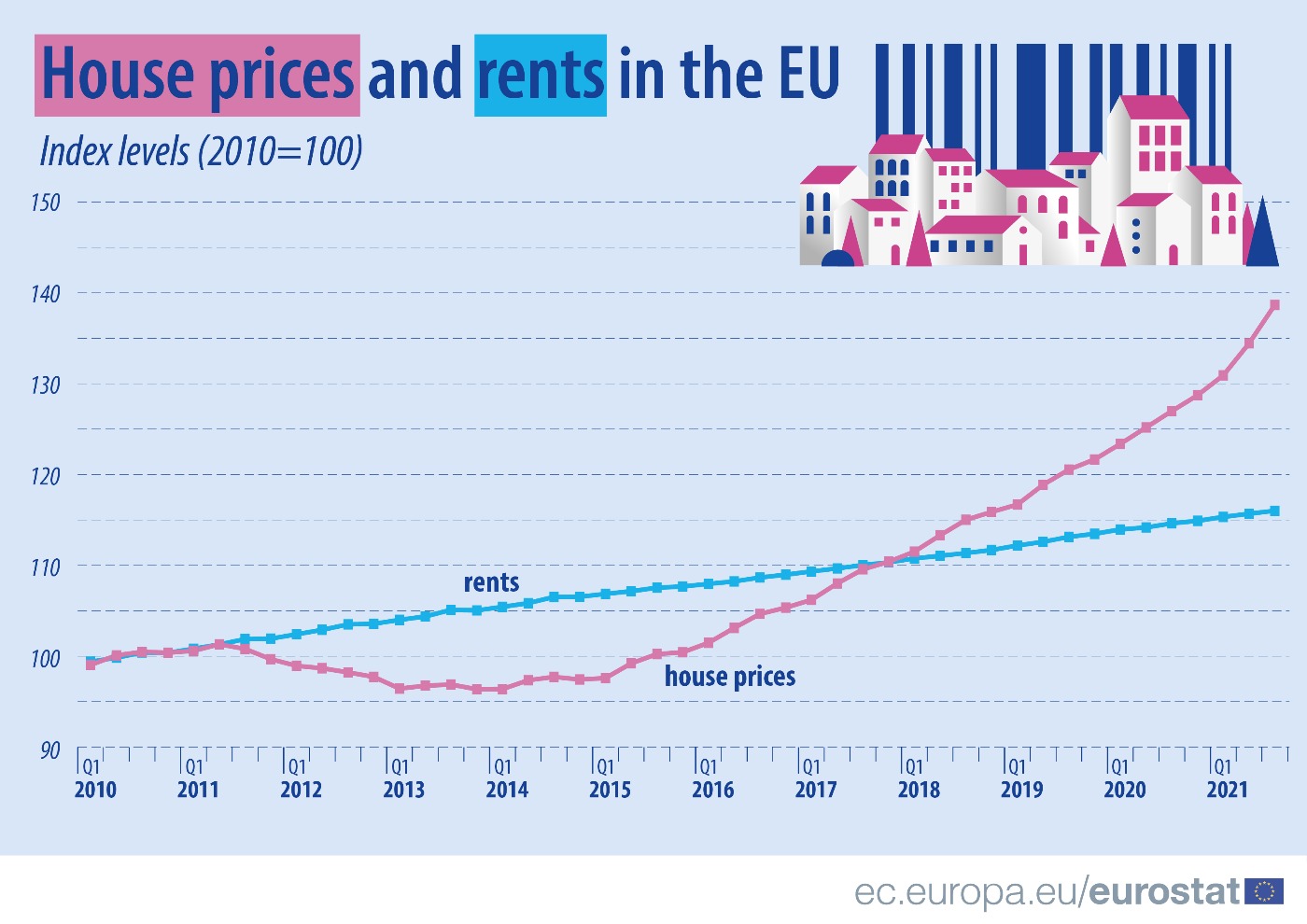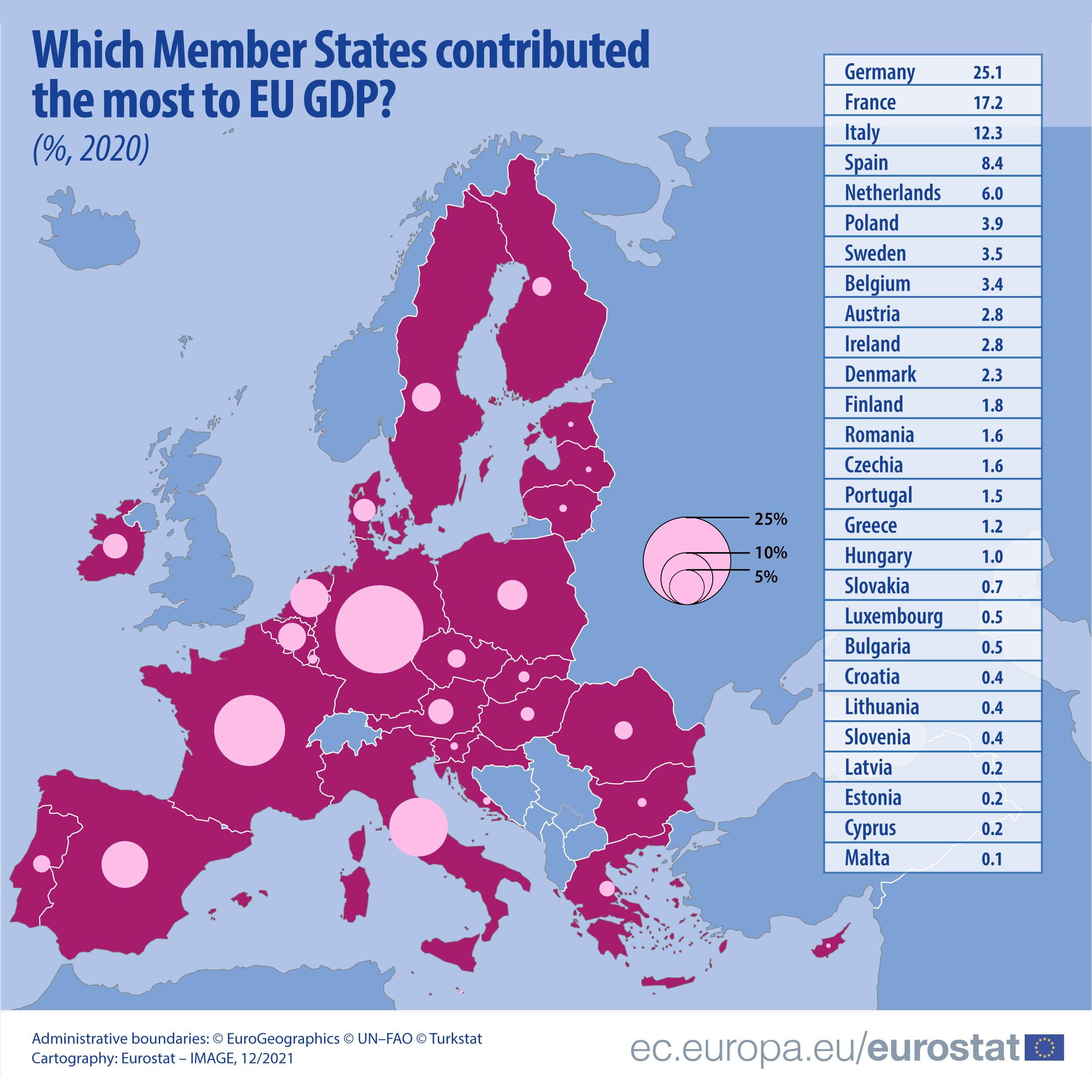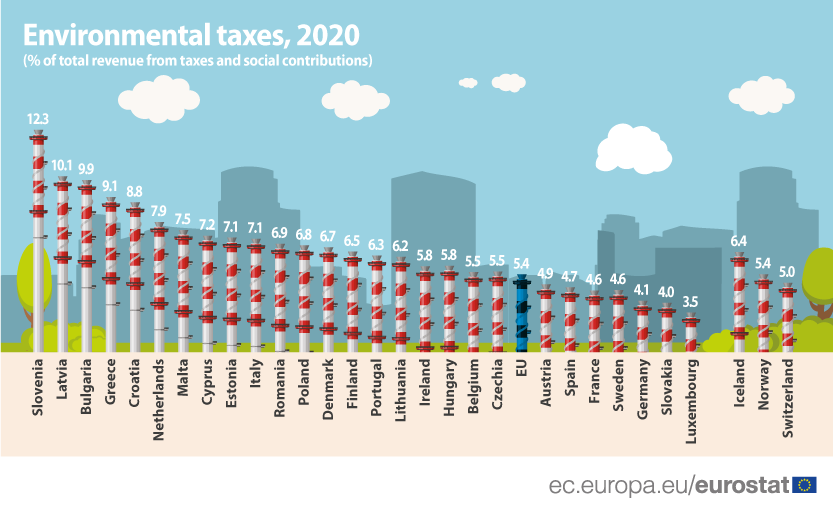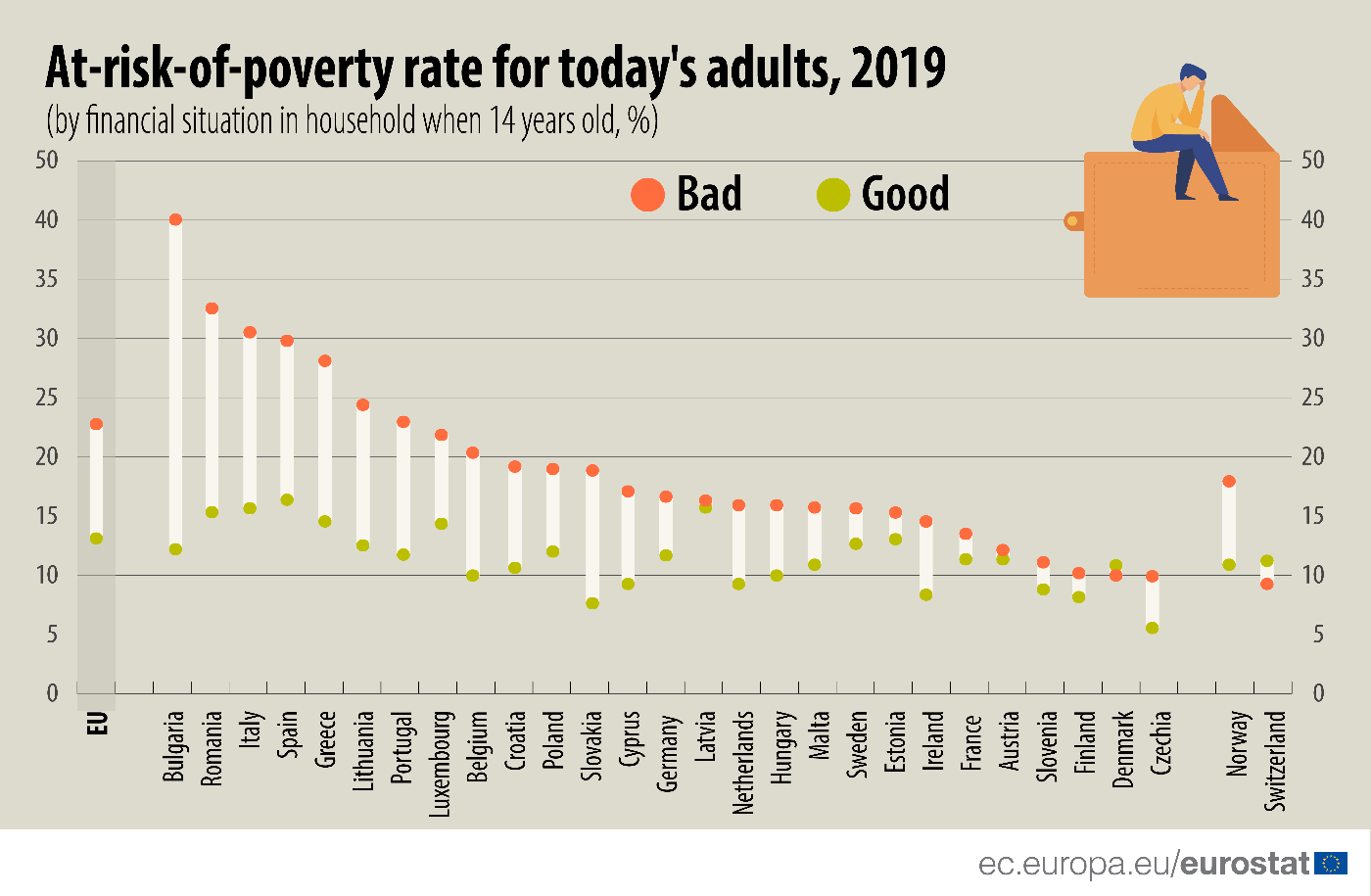The area used for organic agricultural production in the EU continues to increase. It covered 14.7 million hectares in 2020, up from 9.5 million hectares in 2012, equivalent to a rise of 56%.
Statistics
In the EU, we still largely rely on fossil fuels for our overall energy supply, illustrated by the ratio of fossil fuels in gross available energy (the total energy demand of a country or region).
In 2021, 80% of people in the EU aged 16 to 74 who used the internet in the last three months prior to the survey knew that cookies can be used to trace people's online activities.
The European Union (EU) has met the 10% target level for 2020 for the share of renewable energy (including liquid biofuels, biomethane and ‘green’ electricity) used in transport.
In 2020, renewable energy sources made up 37% of gross electricity consumption in the EU, up from 34% in 2019.
In 2021, the vast majority (94%) of EU enterprises with at least 10 employees and self-employed people used a fixed broadband connection to access the internet.
Rents and house prices in the EU have continued their steady increase in Q3 2021, going up by 1.2% and 9.2% respectively, compared with Q3 2020.
In 2020, the gross domestic product (GDP) of the EU stood at around €13 400 billion at current prices. In real terms, the EU’s GDP in 2020 was 7.6% higher than its level a decade ago.
In 2020, environmental tax revenue in the EU amounted to €299.9 billion, corresponding
There is a correspondence between the financial situation of the parents’ household and the risk of poverty among today’s adults.
